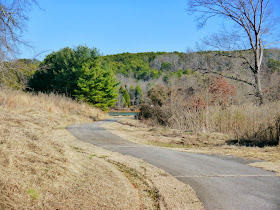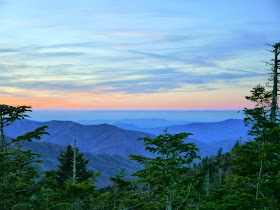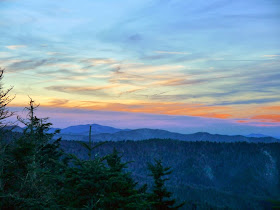On the same mid-January 2014 day we visited Fort Loudoun, I also visited the ruins of the Tellico Blockhouse across the Little Tennessee River. This combination of fort and trading post was in use by the United States during a critical period from 1794 until 1807. While not a factory in modern usage, the Tellico Factory in the blockhouse was used as a training center in an attempt to teach western practices to the Cherokee. This included planting cotton along the Little Tennessee River and coercing the Cherokee into a more agrarian lifestyle by providing spinning wheels and looms. Even though the blockhouse has not been reconstructed, the ruins have been restored and stabilized. Tellico Blockhouse is part of the Fort Loudoun State Historic Area and is managed in conjunction with the Fort Loudoun State Historic Park.
 |
| A paved road winds down from the parking area to the blockhouse |
 |
| An overview of the ruins |
 |
| The reconstructed Fort Loudoun is visible across the Little Tennessee River |
 |
| Palisade to the north of the main gate |
 |
| The main gate |
 |
| Ruins to the north of the main gate |
 |
| The well near the northwest corner of the blockhouse |
 |
| Ruins along the north side of the blockhouse near Ninemile Creek |
 |
| The southeast corner of the blockhouse including the Tellico Factory area inside the palisade fence |
 |
| Ruins along the southern edge of the blockhouse including two hearths |
 |
| Tellico Lake and the Appalachian Mountains |
No admission fee is charged to visit the blockhouse.
The Fort Loudoun Association website is http://fortloudoun.com/.
The park website is http://tnstateparks.com/parks/about/fort-loudoun.















































